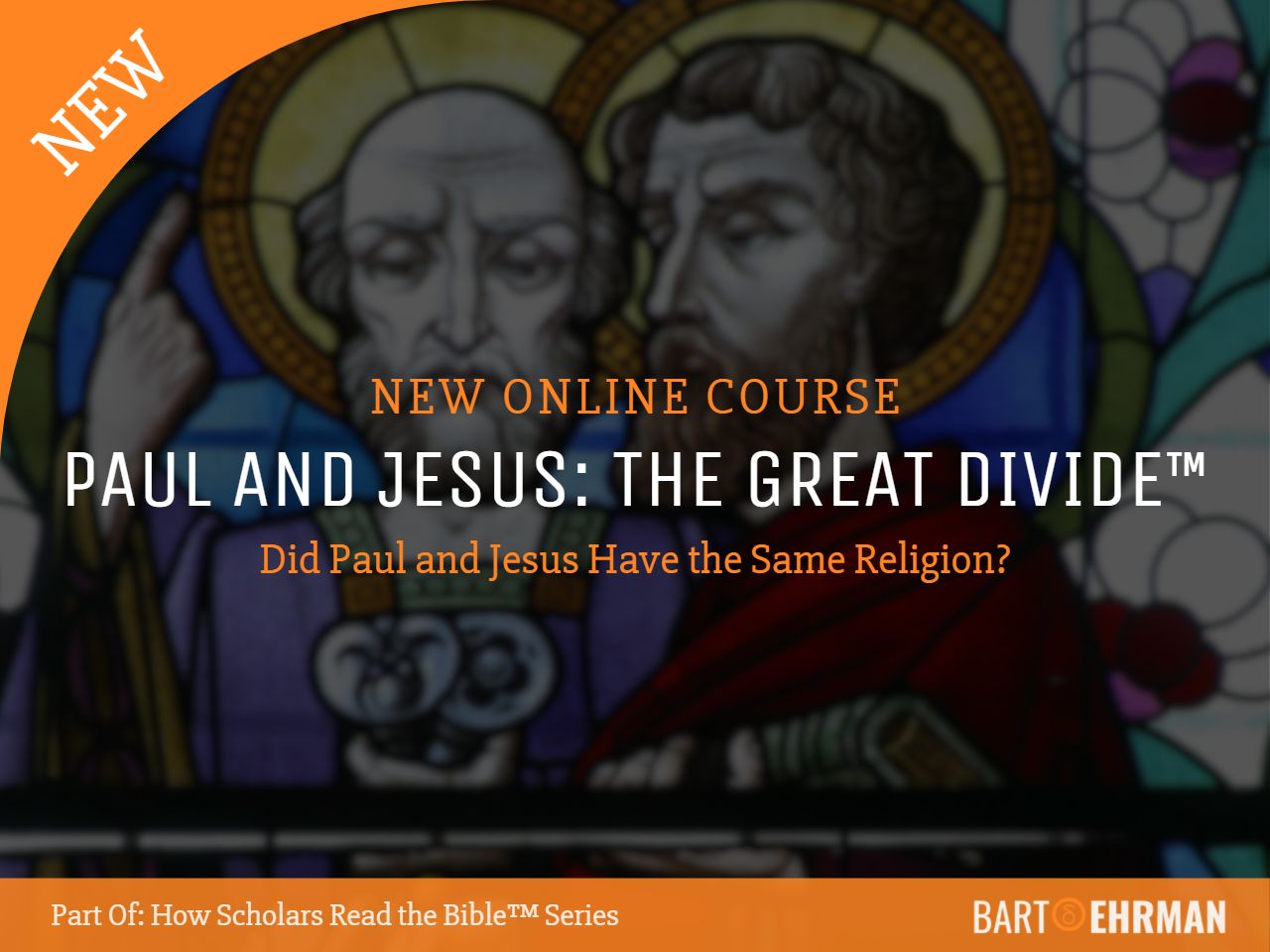Where Did Christianity Originate? (The Founding and Beginning)

Written by Joshua Schachterle, Ph.D
Author | Professor | Scholar
Author | Professor | BE Contributor
Verified! See our editorial guidelines
Verified! See our guidelines
Date written: March 1st, 2024
Disclaimer: The views and opinions expressed in this article belong to the author and do not necessarily match my own. - Dr. Bart D. Ehrman
Where did Christianity originate? Modern Christianity’s influence is so enormous – In 2022, 31.6% of the world’s population identified as Christian – that it’s easy to lose sight of where it began.
What influences can be tied to the places where it started? How might these factors have influenced its beliefs and practices? Let’s delve into these questions.
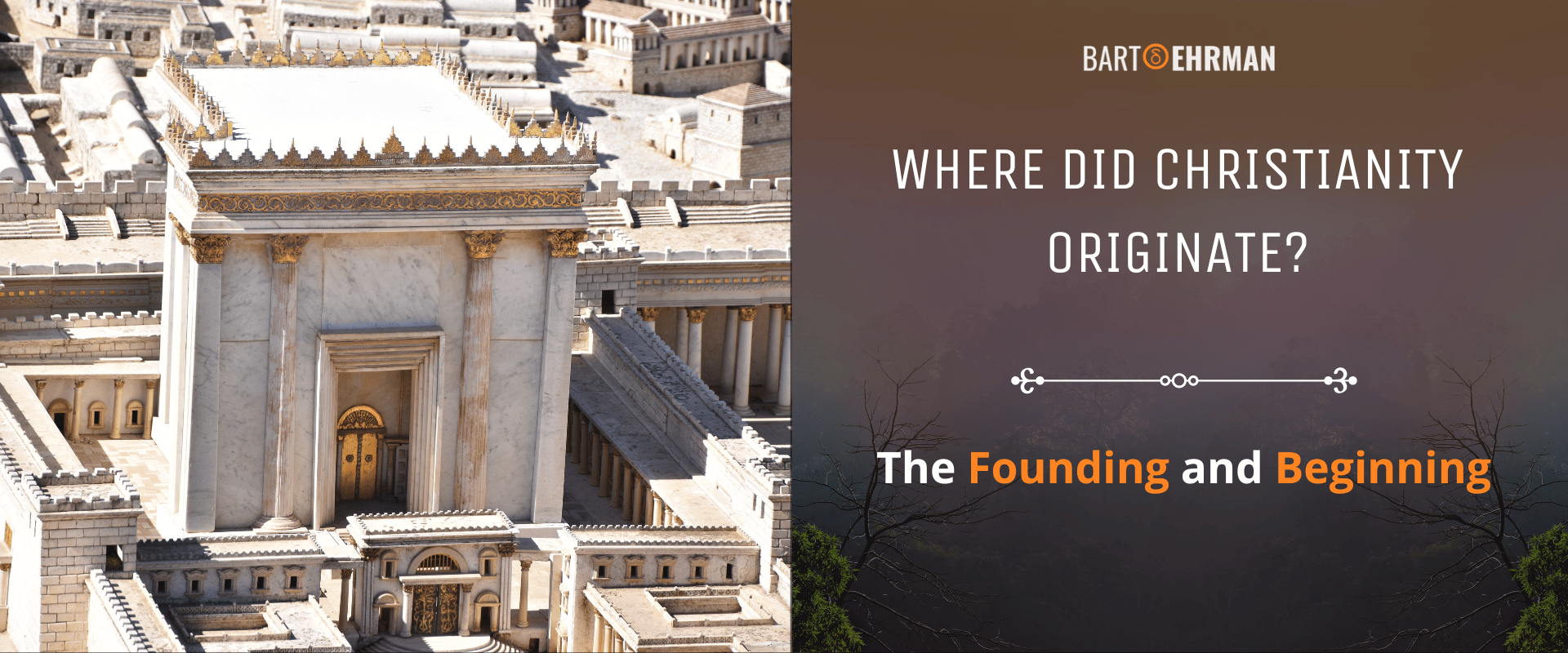
The Origin of Christianity: Where Did Christianity Originate?
Since Christianity is a religion based on Jesus, let’s start by examining where he was from. Jesus came from a tiny hamlet called Nazareth in the northern region of Palestine known as the Galilee. I’d like to examine what the Galilee was like in the 1st century CE when Jesus lived there.
The Galilee was a region divided into two parts known as lower Galilee and upper Galilee. Nazareth and the Sea of Galilee, where several of the disciples fished and where Jesus called them, are both in lower Galilee, the southern region. In looking at Christianity’s place of origin, then, it makes sense to focus on lower Galilee.
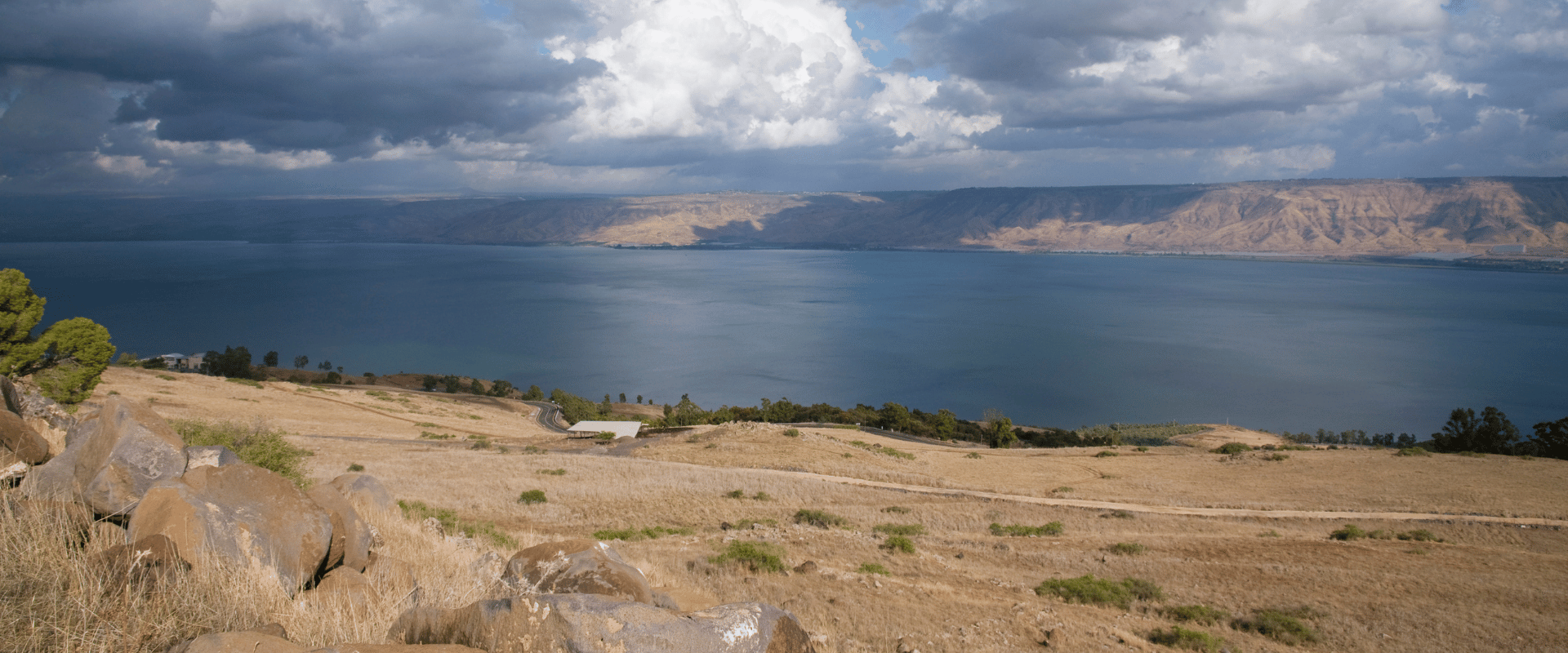
View of Sea of Galilee, Israel
Geographically, lower Galilee had two major cities, Sepphoris and Tiberius. While Tiberius was on the shore of the Sea of Galilee, Sepphoris was further inland and was only about 3 ½ miles from Nazareth. Sepphoris had been destroyed by Roman forces in response to a Jewish revolt around the time of Jesus’ birth (4 BCE) and was probably being rebuilt during his lifetime.
Sakari Häkkinen writes that the vast majority of people in lower Galilee were farmers, although there was, of course, a small fishing industry as well. These were not wealthy farmers, though, as around 90% of them lived at subsistence level, barely able to eke out a living.
John Kloppenborg characterizes the precarity of most 1st-century Galileans this way:
One bad harvest or one serious misfortune might mean the loss of everything, since the new patronal class, already viewed with distrust, could not be depended upon for help.
In other words, there was no social safety net for the destitute.
How Would This Have Influenced Jesus’ Teaching?
If indeed Jesus was originally a carpenter as he is called in the Gospel of Mark, John Dominic Crossan writes that he would have been a member of the Artisan class, likely living at a subsistence level with his family who were always in danger of losing everything to economic misfortune. His Galilean environment and his socioeconomic status emerge clearly in some of his teachings.
Think about Jesus’ parables, for instance. The Parable of the Sower (Matthew 13:1–23, Mark 4:1–20, Luke 8:4–15), the Parable of the Growing Seed (Mark 4:26-29), the Parable of the Mustard Seed (Matthew 13:31–32, Mark 4:30–32, and Luke 13:18–19), and the Parable of the Tares (Matthew 13:24-43) all have agricultural themes. This makes sense: Jesus did most of his preaching in Galilee and his mostly-agricultural audience would clearly have related to these metaphors.
Several other parables refer to poverty. The Parable of the Workers in the Vineyard (Matthew 20:1-16) shows the owner of a vineyard paying his workers the same wage no matter how long or short the time they worked there, a clearly unjust practice.
Since debt was a constant burden for the poor, there is also the Parable of the Unforgiving Servant in Matthew 18:21-35 in which a servant’s debt is forgiven by a master, after which that servant refuses to forgive the debt someone else owes him. The poor of Galilee would have understood the lesson of mercy perfectly.
Finally, in the Matthew 6:25-30, Jesus has this to say:
“Therefore I tell you, do not worry about your life, what you will eat or what you will drink, or about your body, what you will wear. Is not life more than food and the body more than clothing? Look at the birds of the air: they neither sow nor reap nor gather into barns, and yet your heavenly Father feeds them. Are you not of more value than they? And which of you by worrying can add a single hour to your span of life? And why do you worry about clothing? Consider the lilies of the field, how they grow; they neither toil nor spin, yet I tell you, even Solomon in all his glory was not clothed like one of these. But if God so clothes the grass of the field, which is alive today and tomorrow is thrown into the oven, will he not much more clothe you—you of little faith?”
Think about the meaning of this for a subsistence farmer who could lose everything he has at any moment! For them, this would have been a much more radical suggestion than it would be for a modern, middle-class person.
Not only did Jesus emerge from a 1st-century Galilean context, but his ideas and teachings arose from that geographic and social context as well.
What Was the Religious Environment in 1st-Century Galilee?
Since the majority of people living in 1st-century Galilee were Jews, the religious environment was steeped in the Judaism of its time. Most of the cultic significance, including important Jewish festivals and sacrifices, were centered on the Temple in Jerusalem in the region of Judea. We know that many Jews traveled to Jerusalem for Passover, as Jesus did, but this doesn’t mean that religion was neglected in the Galilee itself.
The center of religious life outside of Jerusalem was the synagogue, a word which comes from Greek and means “a place of assembly”. Archaeological evidence shows that synagogues were used as places of discussion for their communities. They were also public institutions and were therefore political as well as religious.
In fact, remains of more than 50 ancient synagogues have been found by archeologists in the Galilee alone, the oldest of which is from the early 1st century CE..
It’s no accident, then, that the Gospels show Jesus preaching to groups of people in synagogues. Every time Jesus comes to a different town, including his hometown of Nazareth, the Gospels say he “entered the synagogue and taught” (see Mark 1:21, Matthew 4:23). Why the synagogue? Because he knew that people in each town already assembled there, providing him with a ready audience.
Having established the geographic, economic, and social forces that shaped the Galilee in the 1st-century, I’d now like to take a look at where Christianity first spread outside of Palestine. Christianity soon changed and developed in small communities in the province of Asia Minor (in modern-day Turkey).
Did You Know?
Some authors have suggested that Jesus, as a young carpenter, may have worked in Sepphoris rebuilding the city after its destruction. Since it’s been noted that Greek was frequently spoken in the two Galilean cities, some have also suggested that Jesus, as a worker there, might have spoken Greek himself. Bart Ehrman disagrees, noting that rural people like those of Nazareth hardly ever traveled at all in the ancient world. Moreover, there is no mention of the city of Sepphoris in the New Testament. So while Jesus certainly could have visited Sepphoris, there’s no evidence to suggest that he actually did, or that he spoke Greek.
In the Beginning: Where Did Christianity Start?
If Christianity’s place of origin was the Galilee in Palestine, thanks to Paul and other missionaries, it soon developed and spread into Asia Minor. What do we know about 1st-century Asia minor? How did that region help to shape what Christianity would become? Let’s focus on Paul’s influence.
Paul was said to be from Tarsus, a city in the region of Cilicia within the Roman province of Asia Minor. After his conversion, he went on to preach and establish Jesus communities in cities all over Asia Minor including Ephesus, Galatia, Laodicea, and Pergamum before going on to Greece. Since Paul’s hometown was in Asia Minor as well, let’s look first at its geography.
You can see many of these places in the map below, which also shows Paul’s missionary journeys.
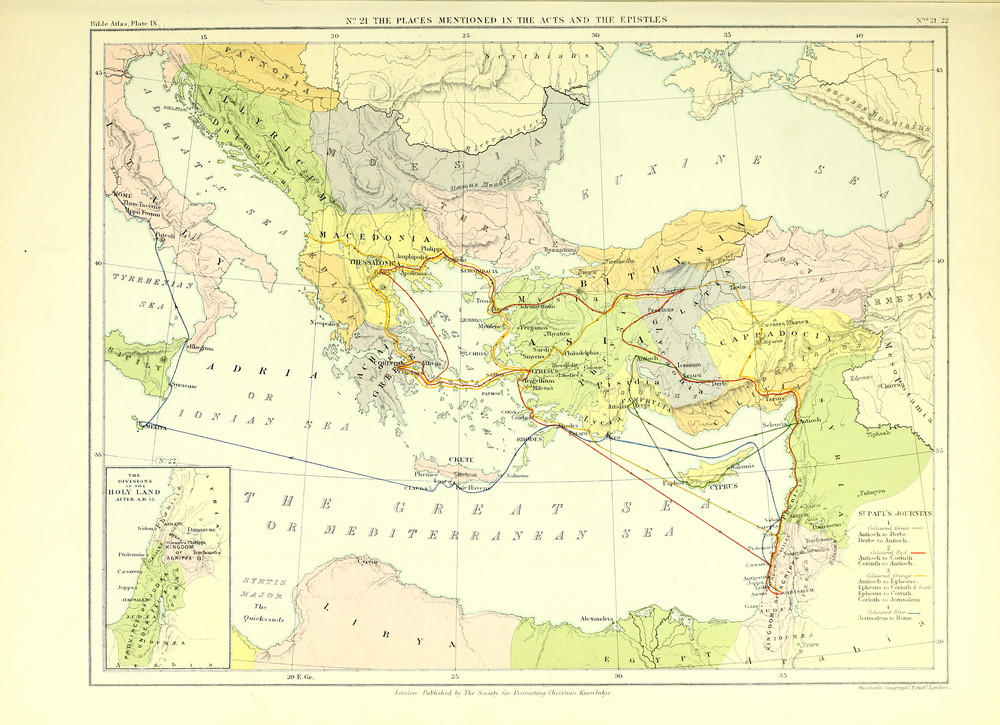
Asia Minor is a peninsula jutting out from the continent of Asia to the east and connected to Europe via the Black and Aegean Seas to the west. Unlike the Galilee, which was mostly rural, culture in Asia Minor was predominantly urban with several large cities.
Like Palestine, Asia Minor was conquered by Alexander the Great and became part of his empire, which was eventually taken over by the Romans. Asia Minor, though, thoroughly absorbed all things Greek. The first language of most of its inhabitants, including Paul, was Greek. Greek philosophy, such as Plato, Aristotle, and the Stoics were the basis of much of the culture there and temples to Greek and Roman gods dominated the landscape.
How Would This Have Influenced Paul’s Teachings?
Keep in mind that although he was fully Jewish, Paul was also born and raised amidst Greek and Roman culture. Rather than subtracting from his Jewishness, the culture of Asia Minor added an extra perspective not found in the teachings of Jesus. In this way, his life and his way of thinking were quite different from that of Jesus and his disciples, all of whom were products of Galilee.
For example, classicist Emily Wilson writes that “Paul was deeply influenced by Stoic philosophy… He borrowed the notions of indifferent things, of what is properly one’s own, the ideal of freedom from passion, and the paradoxical notion of freedom through slavery, fairly directly from the Stoics.”
Scholars debate whether Paul knew he was borrowing these concepts from Greek philosophy or whether such concepts, as part of the cultural world into which he was born, merely seeped into his thinking along with his Pharisaic Judaism. Either way, such thinking was a departure, in many ways, from what Jesus had taught.
A good example is Paul’s use of the term “spirit” (Greek: pneuma). Troels Engberg-Pedersen notes that we generally use that word, or the word “spiritual,” to mean an immaterial thing, something that cannot be perceived or touched by the physical senses. Paul, however, seems to have a different idea.
When Paul refers to “spirit,” says Engberg-Pedersen, it is something physical, albeit much more highly refined than our normal, everyday matter, and can thus act upon the physical world. If he is correct, this is a highly Stoic way of thinking about spirit, signifying that Paul had either read the Stoics himself, or that Stoic thought was very common in Asia Minor at the time. Both are entirely plausible.
Again, none of this takes away from Paul’s Jewishness. Paul refers constantly to the Hebrew Bible and even his interpretation of Christ’s meaning depends upon his exegesis of the Hebrew Scriptures. He is proud to be a Jew and proud of his adherence to Jewish law in Philippians 3:6:
If anyone else has reason to be confident in the flesh, I have more: circumcised on the eighth day, a member of the people of Israel, of the tribe of Benjamin, a Hebrew born of Hebrews; as to the law, a Pharisee; as to zeal, a persecutor of the church; as to righteousness under the law, blameless.
However, add Greek thought to the mix and Paul’s theology becomes something quite different from what the Jerusalem Church was propagating. Perhaps this helps explain his conflict with Peter and James in Antioch, Syria, for example, narrated in Galatians 2:11-13.
Paul also uses references to his urban Greco-Roman environment in his teachings. For example, in 2 Corinthians 10:3-4 Paul says this:
Indeed, we live as humans but do not wage war according to human standards, for the weapons of our warfare are not merely human, but they have divine power to destroy strongholds.
The Roman Empire was in a near-constant state of war in the 1st century, always either expanding or defending its borders. Such talk of weapons and warfare, then, would certainly have resonated with Paul’ audience, who likely saw Roman soldiers regularly. In Galilee, by contrast, there is no evidence that Roman soldiers ever garrisoned there.
In addition, Paul makes use of athletic imagery. An Olympic-style games, called the Isthmian Games were held regularly in Corinth. In Paul’s first letter to his community in Corinth, he invokes these games to talk about living the Christian life:
Do you not know that in a race the runners all compete, but only one receives the prize? Run in such a way that you may win it. Athletes exercise self-control in all things; they do it to receive a perishable wreath, but we an imperishable one. So I do not run aimlessly, nor do I box as though beating the air…
1 Corinthians 9:24–26
Note the references to running races, boxing, and winning prizes as metaphors of living a life that is pleasing to God and being ultimately rewarded for it. These are Greco-Roman images of athletic games, fully in accordance with Paul’s Greco-Roman background ,as well as that of his audience.
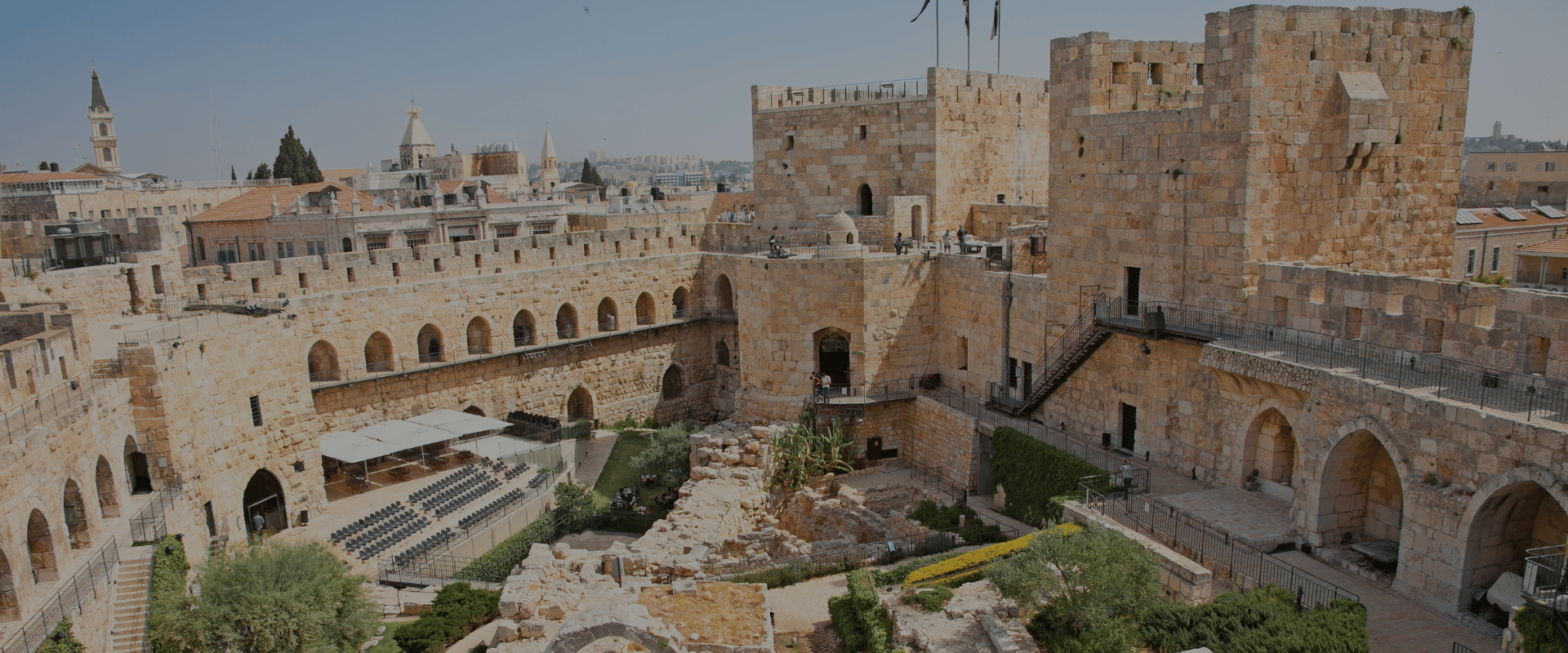
Conclusion
When we look at the history of ideas, it’s important to remember the significant influence of the places from which they come. This includes both geography and culture since these often define our thinking.
While we all know the basics of the Christian origin story, the places in which it originated, developed, and spread often get left out of the picture. So where did Christianity originate from? The Galilee.
The Galilee, where Jesus and his disciples were born and raised, was a place of physical beauty but dire poverty. It’s likely that neither Jesus nor his disciples came from wealth, and it’s entirely possible that they experienced precarity and destitution as well. This clearly shaped Jesus’ thinking.
His parables address the life of agricultural workers, the ethics of landowners and workers, and the constant cloud of worry that hangs over the heads of the poor. Along with the social and religious influence of synagogues, this helped to form Jesus’ unique take on 1st-century Judaism.
Paul, on the other hand, while he was entirely committed to Judaism, was also a product of Asia Minor, a Greek-speaking Roman province where he was born and raised and did much of his missionary work. Paul, wittingly or unwittingly, combined faith in the God of Israel with Stoic thought, creating in the process a new religious form which grew and thrived in his home province of Asia Minor and beyond.
Where did Christianity start as its own movement? The answer seems to be Asia Minor.

